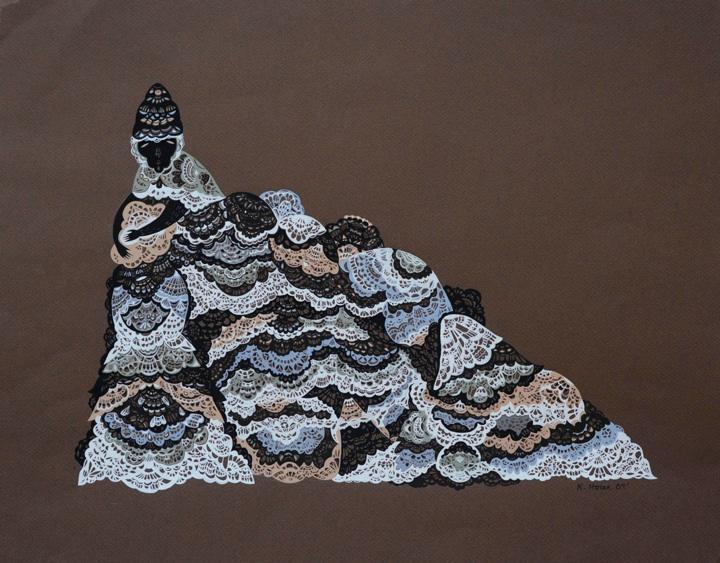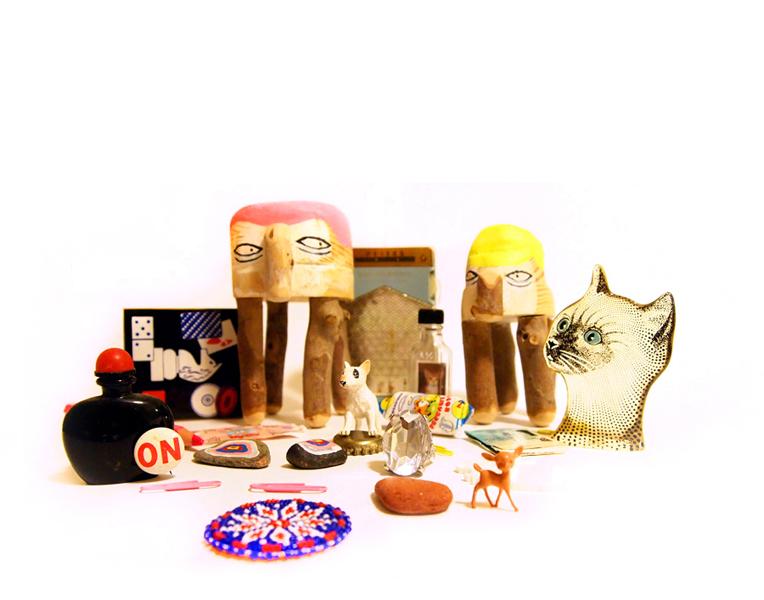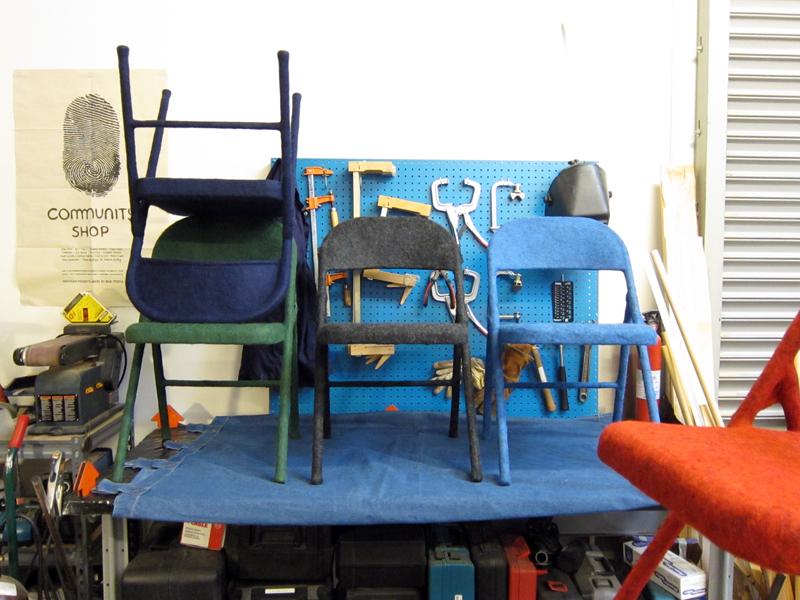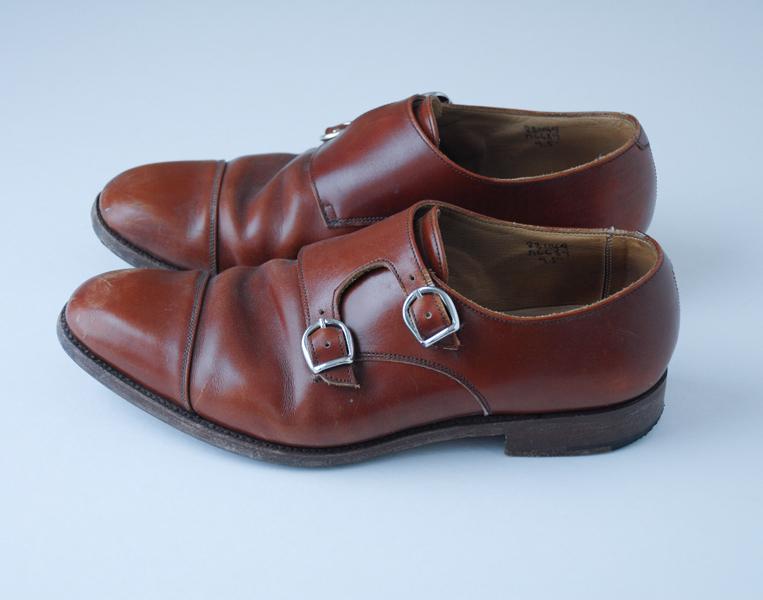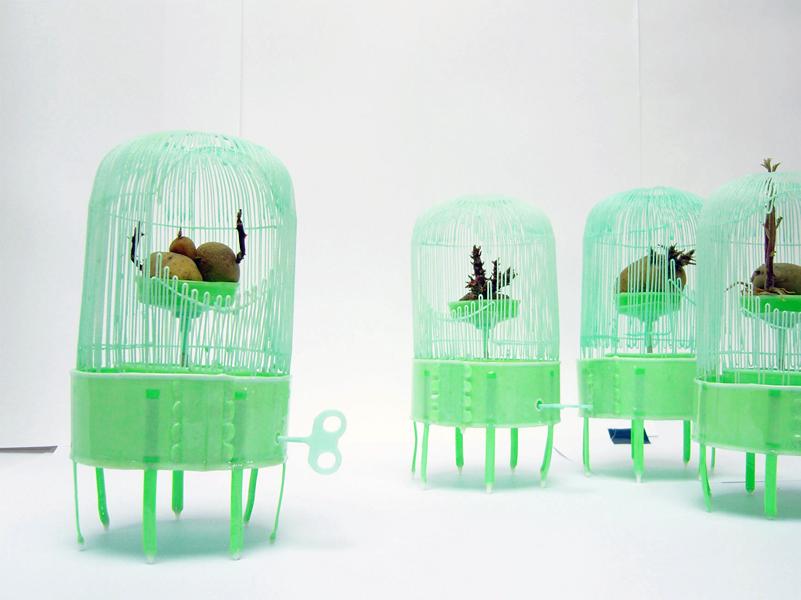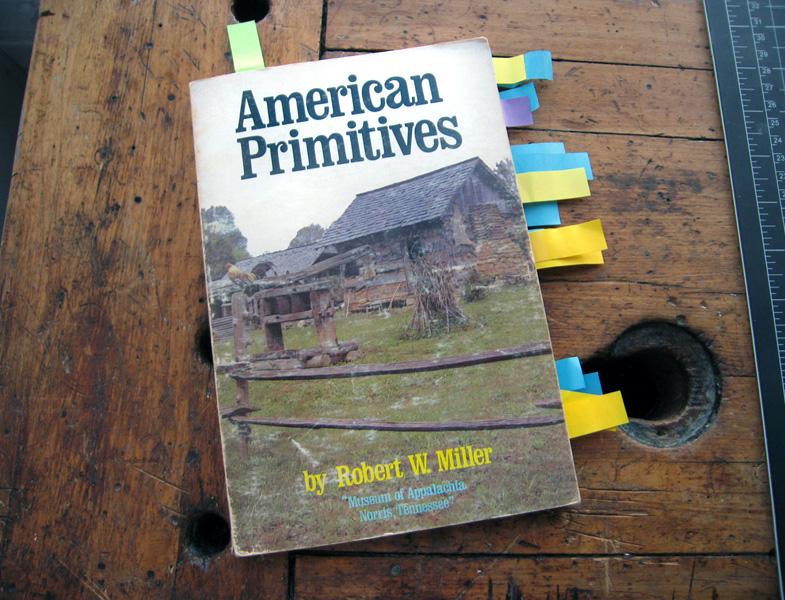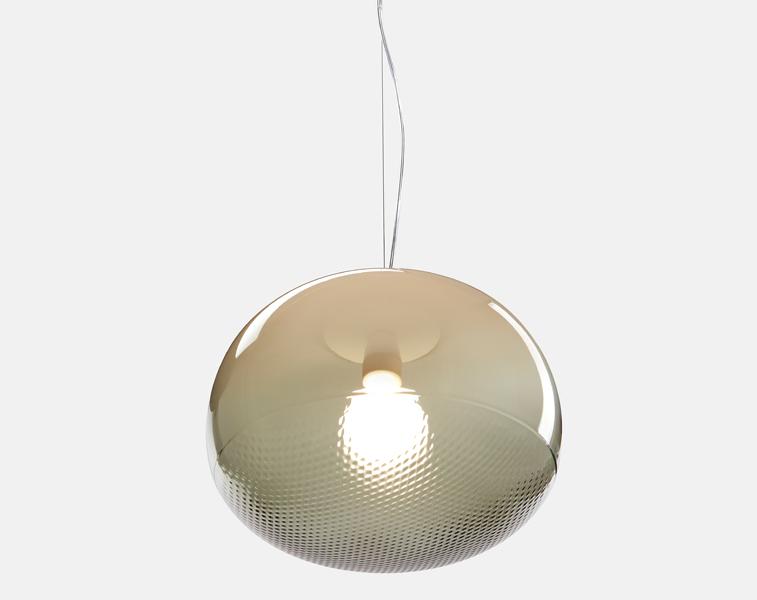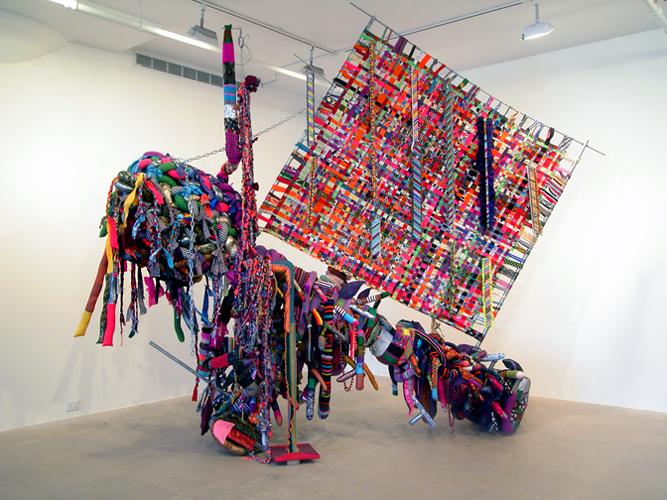
12.23.10
Studio Visit
Jim Drain, Artist
It’s a wonder that Jim Drain isn’t a hoarder of epic, A&E-worthy proportions. Sure, nearly every corner of the 3,000-square-foot Miami studio he shares with fellow artist and girlfriend Naomi Fisher is crammed full of stuff — chains, knitted fabric scraps, yarns, paint cans, talismen, toilet tops, costumes, books, prints, past works, and parts of past works that have been dismembered, all jockeying for attention. But considering Drain has worked with 10 times that many mediums in his nearly 15 years of making art, fashion, and furniture — often incorporating junk found in thrift stores and back alleys — hey, it could be a lot worse. “My dad will find something and go, I got this weird thing I think you’ll like, and my friends do it too, and I’m like, I’m not a trash collector!” he insists.
